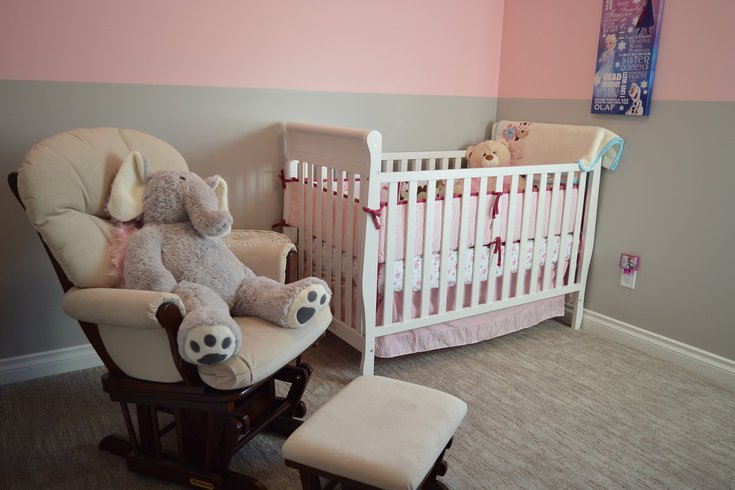
March 20, 2023
 Erica Wittlieb/Pixabay
Erica Wittlieb/Pixabay
To reduce Philadelphia's infant mortality rate, and its underlying racial disparities, the city is testing a program, named Philly Joy Bank, that will give guaranteed monthly incomes to about 250 pregnant women.
Babies born in Philadelphia are more likely to die before their first birthdays than those born in any of the other 10 most populated cities in the United States – and Black families are disproportionately affected.
Black infants are more than 4 times more likely to die than white infants.
To reduce the city's infant mortality rate, and its underlying racial disparities, the Department of Public Health is testing a new program that will provide monthly guaranteed incomes to 250 pregnant residents. The money will be given with no-strings attached, allowing the participants to use the money in whatever ways best meets their needs.
Providing an income during and immediately after pregnancy is a promising approach to addressing racial disparities and improving birth outcomes, health officials said. Program participants also will be offered financial counseling, home visits, lactation support and doulas. The city did not disclose the amount of income that families will receive.
Socioeconomic factors are a well-established contributor to racial health disparities. People with low incomes often struggle to afford the co-pays for doctor visits, medications and healthy foods – all of which can affect the health of a pregnant woman and her baby.
"Infant mortality in Philadelphia is a solvable crisis," Health Commissioner Dr. Cheryl Bettigole said. "We know that being able to better support pregnant people and new parents helps keep babies alive. As the poorest big city in the country, this is not always easy, especially in areas of the city that are being crushed by generational poverty and systemic racism."
The city has received more than $3 million from the William Penn Foundation and Spring Point Partners to kickstart the program, dubbed Philly Joy Bank. It will be run by the Philadelphia Community Action Network, a group focused on reducing racial disparities in infant mortality. The city aims to raise a total of $6 million and roll out the program early next year.
To be eligible, city residents must be pregnant, have an annual household income of less than $100,000 and live in one of the three Philadelphia neighborhoods with the highest rates of very low birth weight: Cobbs Creek, Strawberry Mansion and Nicetown-Tioga.
Though Philadelphia cut the number of infant deaths from nearly 300 in 2005 to 130 in 2020, its infant mortality rate – 8.4 deaths per live births – remains about 40% higher than the national rate of 5.8 deaths per 1,000 live births.
A city report released in 2020 found that infant deaths accounted for 55% of all child deaths in Philadelphia from 2011 to 2017. And the mortality rates of Black infants have been consistently higher than the rates of other racial and ethnic groups, despite public health efforts and advances in obstetrics and pediatric care.
The majority of the deaths were related to prematurity and perinatal conditions, and sleep-related deaths.
With preterm birth comes a higher risk of serious disability and death. Infants born before 37 weeks of pregnancy often experience serious complications, such as difficulty breathing and bleeding in their brains. Though the rate of preterm births in the city have gradually declined, they are most common among Black women.
Babies born at a low birth weight – less than 5 1/2 pounds – also have an increased risk of complications, including development delays and early death. In 2018, 1 in 11 infants were born at a low birth weight, and most commonly among people of color. The health conditions of the mother and chronic stress are known to increase the risk of an infant being born at a low-birth weight.
The issues that affect infant mortality rates also influence maternal mortality rates. New mothers in Philadelphia have a higher risk of death than those in other parts of the country.
The city's maternal mortality rate was about 20 deaths per 100,000 live births from 2013 to 2018, according a report by the city's Maternal Mortality Review Committee. Though this was a significant decline from prior years, it was still higher than the 2018 national rate of 17.4 per 100,000. And like their babies, Black women were more likely than women of other races and ethnicities to die from pregnancy-related causes — any death that occurs during or within one year of the end of a pregnancy. Black women made up 73% of the deaths although they only accounted for 43% of overall births.
The committee analyzed each of the 110 pregnancy-associated deaths that occurred between 2013 and 2018. It determined 26 were pregnancy-related — deaths caused by, or aggravated by the pregnancy or its management. Of them, 46% were caused by cardiovascular problems. Another 23% were caused by embolisms and 12% were related to infections. Eight percent were caused by hemorrhage. The other 84 deaths involved preventable factors like drug overdoses, car crashes and fires.
Of the people who suffered pregnancy-associated deaths, 21% did not receive any prenatal care — a figure about four times higher than the general population.
Philadelphia is not alone in these issues.
Maternal and infant death rates remain high across the United States when compared to the rates found in other wealthy, industrialized countries. In 2020, almost 20,000 infants died in the U.S., according to the Centers for Disease Control and Prevention. The five leading causes of infant death were birth defects, preterm birth and low birth weight, sudden infant death syndrome, injuries and maternal pregnancy complications.
Also in 2020, despite a record-low number of unexplained infant deaths overall, there was a surge in unexplained deaths in Black infants. The rate of SIDS, or sudden infant death syndrome, increased by 15%.
The reasons for this increase are not fully understood, but experts said that poverty, lack of safe bedding and higher rates of smoking and preterm birth may have contributed.
According to a CDC report released last week, there were 32.9 maternal deaths per 100,000 live births in 2021, the highest rate in the U.S. since 1965, and an increase of 38% from 2020. That was up from 23.8 in 2020 and 20.1 in 2019. Overall, 1,205 women died during childbirth or in the six weeks afterward in 2021, an increase from 861 in 2020 and 754 in 2019.
The report found that maternal deaths rates rose among all racial groups. But Black women again had the highest rate, at 70 deaths per 100,000 live births, despite being less likely to give birth. White women had the lowest rate, at 26.6 deaths per 100,000 births, but prior to the pandemic, Hispanic women had the lowest maternal death rate.
Experts emphasize that chronic conditions, poor health care access, structural racism and implicit bias all contribute to the high maternal death rates.